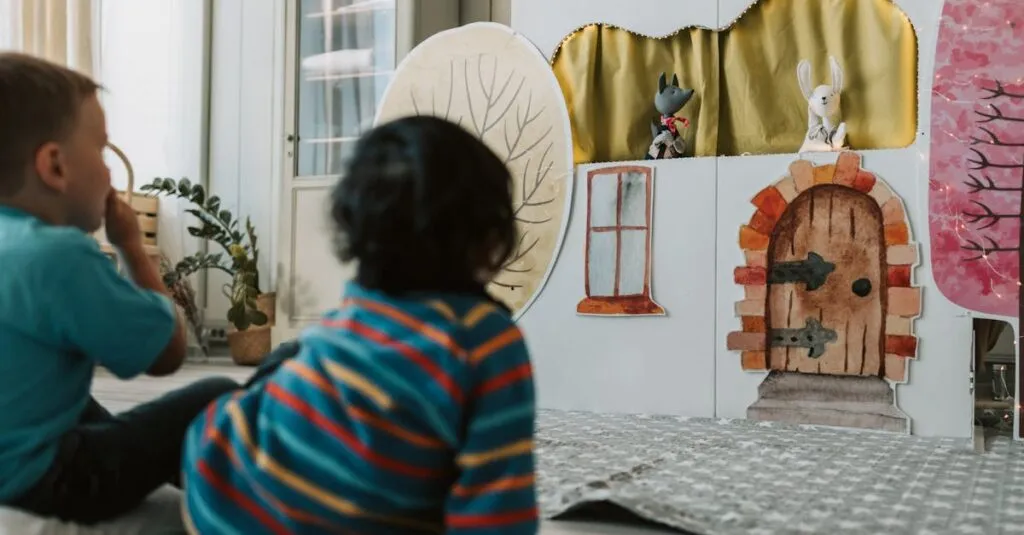Why Talk About the Tower of Babel?
Discussing the Tower of Babel with preschoolers might seem like a tall order. However, this ancient story offers a wealth of moral lessons, perfect for young minds. The tale teaches about the importance of communication and the value of working together. Curiosity and motivation can be piqued by presenting it as a mysterious and magical event.
In a time when children are learning about language and social skills, this story can resonate deeply. Introducing it during Sabbath School lessons is an ideal way to blend biblical teachings with early education.
So, why not dive in and share this towering tale in a fun and engaging way? As one Sunday School teacher said, “If they can build castles with blocks, they can understand the logic in the Tower of Babel story.”

Simplifying the Story for Little Minds
To capture the attention of preschoolers, simplify the story of the Tower of Babel into digestible bites. Instead of focusing on complex ideas, emphasize the basics:
- Highlight how people tried to build a tower that reaches the sky.
- Introduce characters as ‘Helpers’ or ‘Builders’ to make them relatable.
- Use simple props like building blocks to model the story, turning an abstract concept into something tangible.
Preschoolers love stories with visual aids, so use plenty of colorful illustrations. Reflect real emotions that show why cooperating is beneficial. This approach may turn a biblical lesson into quality family time.
One parent shared, ‘My child now uses blocks to tell the story of the people who wanted to touch the clouds!’

Engaging Preschoolers with Interactive Activities
Interactive activities can transform a lesson from mundane to magical. Here are some creative ideas to engage preschoolers:
- Tower of Babel Building: Encourage kids to build their own ‘Towers of Babel’ using toy blocks or crafting materials.
- Language Scramble Game: After the building activity, have a fun ‘language scramble’ game. Kids can invent their own silly languages, which enacts the story’s core message and makes it memorable.
- Singing and Storytelling: Singing songs or reading a short play about the tower can add to the fun. This boosts engagement and helps reinforce the moral of the story.
- Creative Drawing: Another idea is to have children draw the tower, allowing them to add their favorite fantasy elements like dragons or magic doors.
The aim is to creatively engage their imagination and reinforce the story. Parents have found that these activities help ground the biblical tale. One parent noted, ‘Our playtime now includes languages only our dogs seem to understand!’

Dealing with Emotional Challenges
Children often grapple with understanding the emotional landscape of the Tower of Babel. Discussing feelings about being unable to communicate helps them grasp new emotions. Encourage children to express how they think the builders felt when they couldn’t understand one another.
Bring these emotional lessons back to the playground where misunderstandings can occur. Using puppets or role-playing helps kids experiment safely and build empathy. One parent noted, ‘My child now seems to handle disputes with newfound wisdom, sometimes even telling his friends, “Don’t break the blocks, build them higher!”’ Addressing these emotions can make the learning experience both meaningful and enlightening for a preschooler.

- Discuss feelings about communication barriers.
- Encourage expression of emotions related to misunderstandings.
- Utilize puppets or role-playing in lessons.
- Apply emotional lessons in playful settings.
- Foster empathy through safe experimentation.
Humor and Personal Touches
Injecting humor and personal stories can make the lesson on the Tower of Babel even more relatable. Share funny tales about misunderstandings, like the time I asked a tourist for directions in broken Spanish and ended up in the wrong restaurant!
Relating these moments brings the story out of ancient history and into everyday life. Humor helps break down barriers, inviting preschoolers to learn without pressure.
Parents often find humor opens lines of communication, making the biblical tale come alive. ‘Laughter is the glue that sticks lessons in little minds’, my grandma always said, usually before retelling the funniest story of her youth with her own creativity!

Encouraging Curiosity and Questions
Curiosity is the best driver for learning, and the Tower of Babel story is ripe with opportunities. Encourage children to ask about different languages and cultures. Perhaps point them to a world map and explore where friends and relatives live, sparking interest about far-off lands just like Babel.
Research shows that curiosity supports emotional development and linguistic skills. Invite children to bring questions or propose building the ‘biggest tower’ they can recreate at home. Empowering them to explore fosters deeper understanding and enthusiasm.
It also provides a golden opportunity for family bonding, with one parent sharing, ‘We now have Babel-inspired towers glowing in every room – there’s a biblical architect in training here!’

Practical Tips for Parents
Parents play a crucial role in weaving these stories into everyday life. Start by setting aside special time each week to explore such stories together. Use music or art to further cement learning, as some children may respond better visually or aurally.
Continue the conversation beyond Sabbath school; even shopping trips can explore diverse cultures and languages. Documenting these experiences through crafts or drawings keeps the excitement going.
Reflect on what the story teaches about teamwork and listening, embedding these values in daily life. One parent observed, ‘Sabbath stories have now become part of our weekly routine, offering endless adventures and lessons for my little one.’
This continued exploration reinforces learning and nurtures a love for biblical stories.

